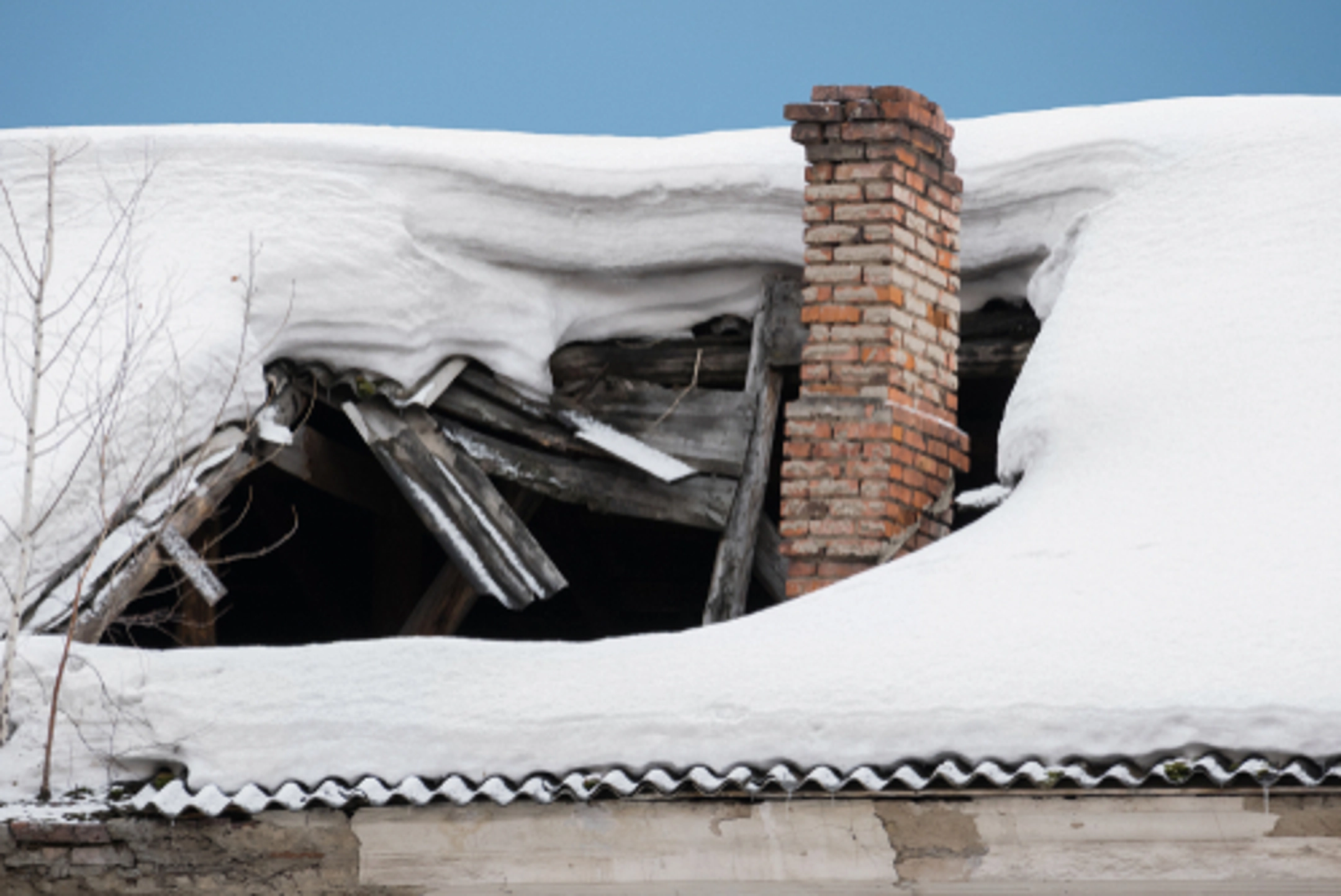
Did you know winter can put an enormous strain on your roof? The bitter cold temperatures, snowstorms, and ice that accompany the winter season can also take an extreme toll on your roof, the shingles, the gutters, and the attic, and even cause your roof to collapse.
If winter weather causes damage to your home, call the professionals at SERVPRO®. Here are six things you need to know to prevent roof damage in winter.
1) Evaluate Your Roof Twice a Year for Weakness
American Home Shield recommends that you inspect your roof at least twice a year (once in the spring and once in the fall.) Leaf piles, algae, moss, and other debris should be removed. American Home Shield says, “Moss is especially dangerous because it soaks up rainwater like a sponge. The moisture can cause the wooden structure underneath your roof to mold and decay, which can compromise the structural integrity of your roof.” A moss killer can be applied however, moss- and algae-resistant shingles are available.
2) Check Roof Shingles for Damage
Shingles form a barrier between the elements and your roof. However, American Home Shield points out that “hot air in your attic can cause your shingles to warp, buckle, or curl.” Damaged shingles should be replaced as soon as you can to prevent water damage and possible mold damage to your roof, attic, and ceiling.
3) Inspect the Roof Fascia, Gutters, and Flashing
The professionals at American Home Shield recommend taking an up-close look at your roof fascia, paying close attention to the gutters and flashing (the metal material that redirects water from the roof to the gutter.)
As the snow falls, it collects on your roof. And, as your home warms up, heat from the attic, combined with heat from the sun, will melt the snow on the roof and the water drains into the gutter. However, when that water refreezes in the gutter, it forms icicles and the draining stops, forming an ice dam. The professionals at American Home Shield say the weight of the ice dam can damage the gutter and the roof fascia, leading to water damage and possible mold damage in your home.
4) Inspect Your Attic for Water Leaks
American Home Shield recommends that you also take a trip up to the attic of your home at least twice a year. Once there, take a look around for any signs of a roof leak, such as a dark stain on the ceiling, a weak floorboard, or an obvious wet area. You should also check the rafters. Checking this area for signs of moisture, mold, or rot can prevent roof damage during a snowstorm and save your home from mold damage.
5) Learn the Pitch of Your Roof
DisasterSafety.org recommends that you become familiar with what your roof can carry before snow or ice becomes a problem. “Melting snow tends to more quickly run off steep sloped roofs with slopes greater than 3 inches of slope in 12 inches of horizontal distance, particularly the steeper ones that are typically found on houses in northern climates.” It goes on to say that a low slope and flat roof will accumulate ice and snow faster.
They continue by saying, “Unless the roof structure is damaged or decayed, most residential roofs regardless of the location of the house should be able to support 20 pounds per square foot of snow before they become stressed.”
So how much does snow and ice weigh on your roof? DisasterSafety.org breaks it all down:
- Fresh Snow: 10-12 inches of snow = 1 inch of water = 5 pounds per square foot of roof space. A roof could become stressed after 4 feet of new snow.
- Packed Snow: 3-5 inches of old snow = 1 inch of water = 5 pounds per square foot of roof space. A roof could become stressed with anything more than 2 feet of old snow.
- Fresh Snow + Packed Snow: 2 feet of packed snow with 2 feet of new snow could weigh as much as 60 pounds per square foot of roof space, exceeding the snow load capacity of most roofs.
- Ice: 1 inch of ice = 1 foot of fresh snow
6) Remove Snow from Your Roof if Possible
If the snow load is higher than what your roof can withstand, remove the snow. If you cannot remove the snow safely, there are snow removal services that can be hired.
SERVPRO is Here to Help®
For all your roofing needs, call the professionals at SERVPRO. If your roof collapses from the snow, ice, or any kind of storm damage, call any of our 2290 locations for roof tarp and emergency board-up services. You can trust SERVPRO when disaster strikes at any time. We are available around the clock, 365 days a year.